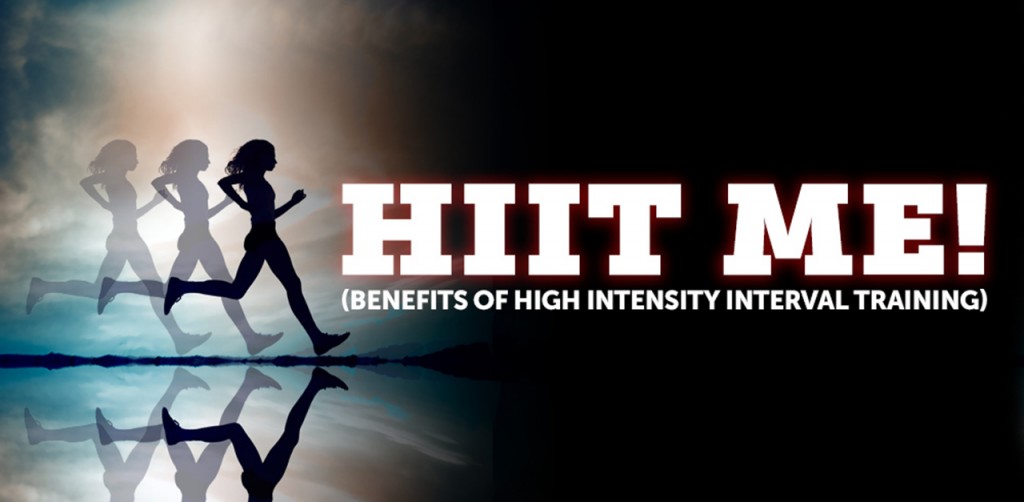All you need to know about HIIT
HIIT – High Intensity Interval Training
The more and more popular type of training is HIIT (High Intensity Interval Training).
There is a lot of hype about it but not so much information about it. I have been using HIIT for a long time, I didn’t have too much patience for siting on a stationary bike for a long periods of time or run on a treadmill. First couple of times it was hard but it was fun and because of that I have continued to train HIIT almost daily.
In this article there will be a lot of information on how and why to use HIIT training for your fitness goal, if you are trying to lose fat or if you want to build endurance or just stay in shape.
What is HIIT?
Like I’ve mentioned before, it means High Intensity Interval Training. This means, you do opposite of your standard stationary bike where you are at one pace for a long of period of time.
HIIT is, doing a couple of exercises in a very high intensity for one period of time and then rest, and repeat, for an example, the simplest HIIT is, sprint 100m, then slowly walk to start and do sprint again, and repeat this for a couple of times.
This will make your heart rate go crazy and your body will be in state of shock, and your body will tend to use your body fat for energy rather than your muscles.
Benefits of HIIT
1. Time
When it comes to cardio, or working out in general, usually one hour is recommended, but for HIIT even 15 minute workout will help.
If you have a lot of thing that are happening in your day, busy lifestyle, or anything that limits your time, and you can’t fit gym session, HIIT will help you.
2. Health
It is proven that HIIT is healthier for your body that other types of working out.
You will faster reach higher hearth rate, and it will longer stay high during your workout, and that will improve elasticity and flexibility of your veins and arteries.
3. Equipment is optional
Most of HIIT workouts are simple, with only body weight exercises, but you can add some dumbbells, bands, pull up bar or something else.
If you don’t have a space for running near you, you can do your HIIT workout on a treadmill.
Check here for exercise equipment!
4. Endurance
There is a lot of studies that have proven HIIT effectiveness for greater endurance.
HIIT will maximize your VO2 max during your workout.
As your heart rate is going higher and higher with every workout that you do, your endurance will improve.
When I was preparing for a race, I was doing HIIT in the morning, run in the evening, or even some time, right before my evening race.
5. VO2 max
VO2 max or maximal oxygen consumption is the maximum rate of oxygen consumption during exercise that increase intensity over time. This means if you are doing HIIT workouts rather than some other kind of working out, in shorter time your VO2 max will increase more.
6. Afterburn effect
Steady state cardio focus on burning calories during exercise, while HIIT burns calories both during and also after your workout, and that is called after-burn effect.
Your body will burn more fat as an energy source 24 hours after your workout, in my opinion, if you work out in the gym, 6-8 hours before your gym session, do a HIIT workout to boost your metabolism, and to burn more fat in the gym.
7. Belly fat
There is no research that proves this theory, but, it is fairly simple.
If you work for one hour at steady state cardio, you will burn certain amount of calories, but if you do instead HIIT cardio for 45min or even one hour, if you can, you will burn a lot more calories during and after your workout, and after some time, this will definitively help you lose that stubborn belly fat.
8. Space
If you live in a house or in an apartment, you don’t need a lot of space to do your HIIT workout.
For push-ups, squats, jumping jacks or lunges, you don’t need a lot of space, or even some place to fit your treadmill.
Space and time friendly example workout are at the bottom of the article
Conclusion
For many reasons, HIIT is the thing for fat loss, but overweight or obese people will do HIIT much harder considering that their weight won’t be easy to carry around while sprinting or jumping around, so in these cases, is better to stay at steady state cardio for a while, and when they lose some pounds, and it’s healthier for their joints, they can do HIIT with no problem.
In my case, HIIT was very helpful, when I’ve stopped at my fat loss plateau, I’ve stared to do it for 3 times a week, but soon, I was doing almost daily.
Try it for a 2-3 weeks, and measure your results, contact me if it was helpful!
There is plenty of home fitness programs that are based on HIIT principles, so check that out also.
Examples of HIIT exercises
First, and the simplest;
1. Sprint
Find a track, measure a 100m (more or less), set a starting point and the end point.
Go to start, sprint your length and when you reach the end, walk slowly to start, and repeat for 10 times, or 5 for first time. Next time try to do 6, then 7 times, and you can track your heart rate during.
Or you can do this on a treadmill, run fast for 1 minute, and walk slowly for 30 seconds, repeat this for 10 times.
For both workouts, warm-up before with 5-10 minute run, and you can do this to cool down.
2. Tabata
Tabata is one of most popular HIIT workouts, it was invented by Japanese scientist Dr. Izumi Tabata. Tabata is, 20 seconds of high activity followed with 10 seconds of rest, repeat this for 8 times, and this is approximately 4 minutes.
Example:
Jumping Jacks – 20 seconds
Rest – 10 seconds
Push-ups – 20 seconds
Rest – 10 seconds
Squats – 20 seconds
Rest – 10 seconds
Mountain climbers – 20 seconds
Rest – 10 seconds
3. Morning HIIT
This is my routine that I do every morning, exercises may vary, I change them every now an then, but the principle is the same.
I do 40 seconds of high intensity followed by 10 second rest.
Example:
Jumping Jacks – 40 seconds
Rest – 10 seconds
Plank – 40 seconds
Rest – 10 seconds
Push-ups – 40 seconds
Rest – 10 seconds
Mountain climbers – 40 seconds
Rest – 10 seconds
Jumping squats – 40 seconds
Rest – 10 seconds
High knees – 40 seconds
Rest – 10 seconds
Jumping lunges – 40 seconds
Rest – 10 seconds
Burpees – 40 seconds
Rest – 10 seconds


 Tweet
Tweet

